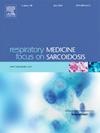基于人体测量的机械通气患者呼吸系统静态顺应性预测:一项横断面实用研究。
IF 3.1
3区 医学
Q2 CARDIAC & CARDIOVASCULAR SYSTEMS
引用次数: 0
摘要
呼吸系统静态顺应性(Crs)的标准值范围为50至70 ml/cmH2O,缺乏人群特异性数据,可能受到人体测量学的影响。目的:描述ICU患者的Crs,评估其与PBW的关系,建立基于人体测量变量的个体化Crs参考值预测模型。方法:在巴西进行了一项多中心横断面研究,涉及机械通气患者。排除了血液动力学不稳定、胸壁畸形或胸内受限的个体。收集的数据包括PBW、平台压力、Crs和驱动压力(DP)。患者被分为高cr(≥0.60 ml/cmH2O/kg)和低cr (< 0.60 ml/cmH2O/kg)。结果:147例患者的Crs平均值(38.0±11.2 ml/cmH2O), DP平均值(10.0[8.0-11.2]cmH2O), Crs/PBW平均值(0.62±0.1 ml/cmH2O/kg)。高、低Crs组Crs和DP值有统计学差异。此外,Crs还与年龄、身高、PBW、Ppeak、Pplat等变量相关。因此,可以理解,身高直接影响Crs,特别是在高Crs肺患者中。使用身高、年龄和性别作为预测因子的多元线性回归模型拟合估计高Crs肺患者的Crs,与p的R2为0.567。结论:我们的研究表明,弹性接近正常的机械通气患者的Crs与人体测量数据有关,尤其是身高和性别。Crs/PBW下限为0.6 ml/cmH2O/kg。本研究还提出了Crs预测的初步模型。本文章由计算机程序翻译,如有差异,请以英文原文为准。
Prediction of static compliance of the respiratory system based on anthropometric measurements in patients on mechanical ventilation: a cross-sectional pragmatic study
Introduction
Standard values for static compliance of the respiratory system (Crs) ranging from 50 to 70 ml/cmH2O lack population-specific data and may be influenced by anthropometry.
Objective
Describe Crs in ICU patients, evaluate its relationship with predicted body weight (PBW), and develop a predictive model for individualized Crs reference values based on anthropometric variables.
Methods
A multicenter cross-sectional study was conducted across Brazil, involving mechanically ventilated patients. Individuals with hemodynamic instability, chest wall deformities, or intrathoracic limitations were excluded. Data collected included PBW, plateau pressure, Crs, and Driving Pressure (DP). Patients were categorized into high Crs (≥0.60 ml/cmH2O/kg) and low Crs (<0.60 ml/cmH2O/kg).
Results
The study included 147 patients with mean values of Crs (38.0 ± 11.2 ml/cmH2O), DP (10.0[8.0–11.2] cmH2O), and Crs/PBW (0.62 ± 0.1 ml/cmH2O/kg). Between high and low Crs groups has observed statistically differences in Crs and DP values. Additionally, Crs also showed correlation with the variables age, height, PBW, Ppeak, and Pplat. Thus, it can be understood that height directly influences Crs, especially in patients with high Crs lungs. A multiple linear regression model using height, age, and sex as predictors was fitted to estimate Crs in patients with high Crs lungs, yielding an R2 of 0.567 with p < 0,01.
Conclusion
Our study indicated that Crs in mechanically ventilated patients with near-normal elastance is associated with anthropometric data, particularly height and sex. A Crs/PBW cutoff of 0.6 ml/cmH2O/kg was established. The study also presents a preliminary model for Crs prediction.
求助全文
通过发布文献求助,成功后即可免费获取论文全文。
去求助
来源期刊

Respiratory medicine
医学-呼吸系统
CiteScore
7.50
自引率
0.00%
发文量
199
审稿时长
38 days
期刊介绍:
Respiratory Medicine is an internationally-renowned journal devoted to the rapid publication of clinically-relevant respiratory medicine research. It combines cutting-edge original research with state-of-the-art reviews dealing with all aspects of respiratory diseases and therapeutic interventions. Topics include adult and paediatric medicine, epidemiology, immunology and cell biology, physiology, occupational disorders, and the role of allergens and pollutants.
Respiratory Medicine is increasingly the journal of choice for publication of phased trial work, commenting on effectiveness, dosage and methods of action.
 求助内容:
求助内容: 应助结果提醒方式:
应助结果提醒方式:


